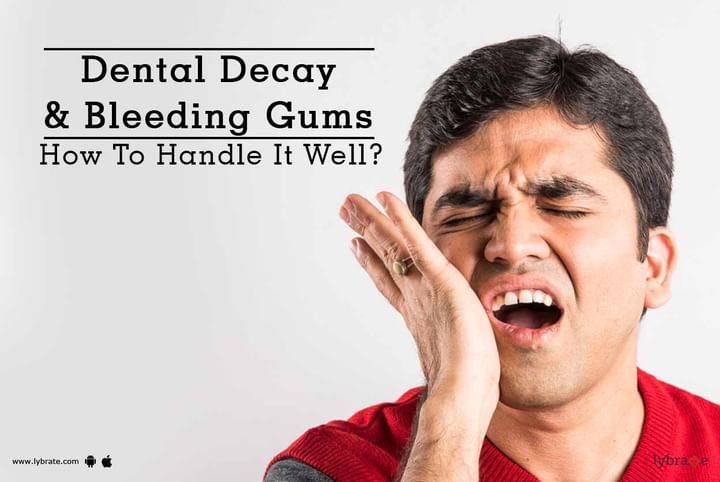Dental Decay & Bleeding Gums - How To Handle It Well?
Tooth decay is one of the most common diseases affecting the oral cavity. Dental cavities is a highly prevalent condition, especially among children. In most cases, improper hygiene leads to deposition of food on the tooth. This in turn is acted upon by harmful bacteria, thus releasing acid that dissolves the tooth structure. In most cases, the decay starts on the outside of the tooth and gradually reaches the inner layers.
Gum diseases and bad breath
One would think that if you are decay free, you have a healthy mouth. However, overall oral health requires healthy gums as well. They cover the teeth and provide anchoring support to the jawbones. Minor infection (gingivitis) can progress to a severe condition (periodontitis), which causes teeth to shake and even fall out! It is one of the main causes of bad breath or halitosis too. Swelling of the gums gradually, leads to spontaneous bleeding, which is the first sign of trouble. This can be managed by simply improving oral hygiene. It is advisable to see the dentist.
Treat cavities and bleeding gums
Listed below are some common methods to manage bleeding gums and bad breath:
1. Brushing: Advisable at least twice a day using a soft bristled toothbrush.
2. Flossing: Flossing removes plaque from between the teeth and reduces chances of decay and gum problems
3. Eating Healthy: Bad food habits are one of the main reasons of bad breath. A bad digestive system manifests as bad breath and so eating healthy is very important for healthy gums. Adequate water, fiber, calcium and Vitamin C are essential for gum health, so ensure they find a place in your diet.
4. Annual Dental Visits: Visit your dentist once in 6 months. Simple procedures that do not require time or money like regular scaling will help improve the teeth and gum health while reduce bad breath issues.



+1.svg)
